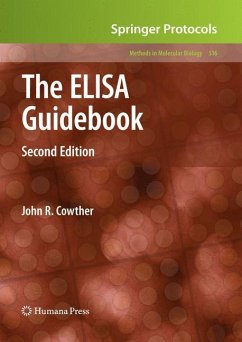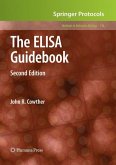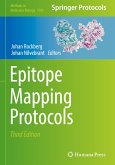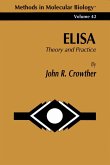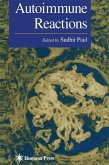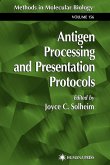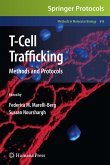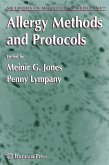There have been very few developments that markedly affect the need to greatly revise the text from the last version of this book. This is testament to the fact that hetero- neous enzyme-linked immunosorbent assays (ELISA) provide ideal systems for dealing with a wide range of studies in many biological areas. The main reason for this success is test flexibility, whereby reactants can be used in different combinations, either attached passively to a solid phase support or in the liquid phase. The exploitation of the ELISA has been increased through continued development of specifically produced reagents, for example, monoclonal and polyclonal antibodies and peptide antigens coupled with the improvement and expansion of commercial products such as enzyme-linked conjugates, substrates and chromogens, plastics technology and design of microwell plates, inst- mentation advances and robotics. However, the principles of the ELISA remain the same. There has been some rearrangement of chapters plus addition of three new ones dealing with charting methods for assessing the indirect ELISA, ruggedness and robustness of tests-aspects of kit use and validation, and internal quality control and external quality management of data, respectively. These reflect the need to control what you are doing with ELISA and to exploit the method to its full extent. I do not apologize for dealing with the same areas in different ways a number of times, as it is imperative that principles are understood to allow planning, operation, and control of ELISA.
From the reviews of the second edition:
"The book contains detailed instructions and extensive illustrations with many practical examples on the technique permitting even investigators not familiar with the technique to learn all the basic concepts and practical experimental details ... and apply ELISA methodology successfully in basic and clinical research. ... The book is written mainly for molecular and cellular biologists, biochemists, pharmaceutical scientists, immunologists, pathologists, laboratory medicine researchers, and all researchers using biochemical assays. ... This volume ... is an excellent manual for the understanding and development of the ELISA." (Ruben Mestril, Doody's Review Service, May, 2009)
"It is the practical ELISA bible, a definitive manual covering theoretical aspects, commercial reagents, troubleshooting, instrumentation, enzyme-linked conjugates and microwell plates. ... Throughout this book excellent use is made of flow diagrams, graphs and tables to aid the reader. ... The ELISA Guidebook is a must for institutional libraries, departments of immunology, hospital diagnostic laboratories, research laboratories using ELISA-based assays and companies developing ELISA immunodiagnostic kits. The book is well worth its price." (Cyril J. Smyth, Microbiology Today, November, 2009)
"The 2nd Edition of The ELISA Guidebook is essentially the author's tribute to the ELISA technology that has revolutionised all laboratories ... . This edition well lives up to its name ... . Overall, I rate this book as an extremely valuable resource ... to the daily ELISA user. I recommend this book to all Biomedical Scientists, Clinical Scientists and trainees in Laboratory Medicine and that one copy should be available in every laboratory that makes extensive use of ELISA." (Sujoy Khan, Immunology News, November, 2009) "The book describes the methods involved in heterogeneous enzyme-linked immunosorbent assays (ELISA) thatprovide ideal systems for dealing with a wide range of studies in many biological areas. ... This method is widely using in various scientific and industrial areas ... . provides a premier practical guide to the understanding and application of ELISA. Each method is described in great detail, and the whole book is an excellent manual for many researchers in biochemistry, molecular biology, immunochemistry, biotechnology, and medicine." (G. Ya. Wiederschain, Biochemistry, Vol. 9, 2009)
"The book contains detailed instructions and extensive illustrations with many practical examples on the technique permitting even investigators not familiar with the technique to learn all the basic concepts and practical experimental details ... and apply ELISA methodology successfully in basic and clinical research. ... The book is written mainly for molecular and cellular biologists, biochemists, pharmaceutical scientists, immunologists, pathologists, laboratory medicine researchers, and all researchers using biochemical assays. ... This volume ... is an excellent manual for the understanding and development of the ELISA." (Ruben Mestril, Doody's Review Service, May, 2009)
"It is the practical ELISA bible, a definitive manual covering theoretical aspects, commercial reagents, troubleshooting, instrumentation, enzyme-linked conjugates and microwell plates. ... Throughout this book excellent use is made of flow diagrams, graphs and tables to aid the reader. ... The ELISA Guidebook is a must for institutional libraries, departments of immunology, hospital diagnostic laboratories, research laboratories using ELISA-based assays and companies developing ELISA immunodiagnostic kits. The book is well worth its price." (Cyril J. Smyth, Microbiology Today, November, 2009)
"The 2nd Edition of The ELISA Guidebook is essentially the author's tribute to the ELISA technology that has revolutionised all laboratories ... . This edition well lives up to its name ... . Overall, I rate this book as an extremely valuable resource ... to the daily ELISA user. I recommend this book to all Biomedical Scientists, Clinical Scientists and trainees in Laboratory Medicine and that one copy should be available in every laboratory that makes extensive use of ELISA." (Sujoy Khan, Immunology News, November, 2009) "The book describes the methods involved in heterogeneous enzyme-linked immunosorbent assays (ELISA) thatprovide ideal systems for dealing with a wide range of studies in many biological areas. ... This method is widely using in various scientific and industrial areas ... . provides a premier practical guide to the understanding and application of ELISA. Each method is described in great detail, and the whole book is an excellent manual for many researchers in biochemistry, molecular biology, immunochemistry, biotechnology, and medicine." (G. Ya. Wiederschain, Biochemistry, Vol. 9, 2009)

